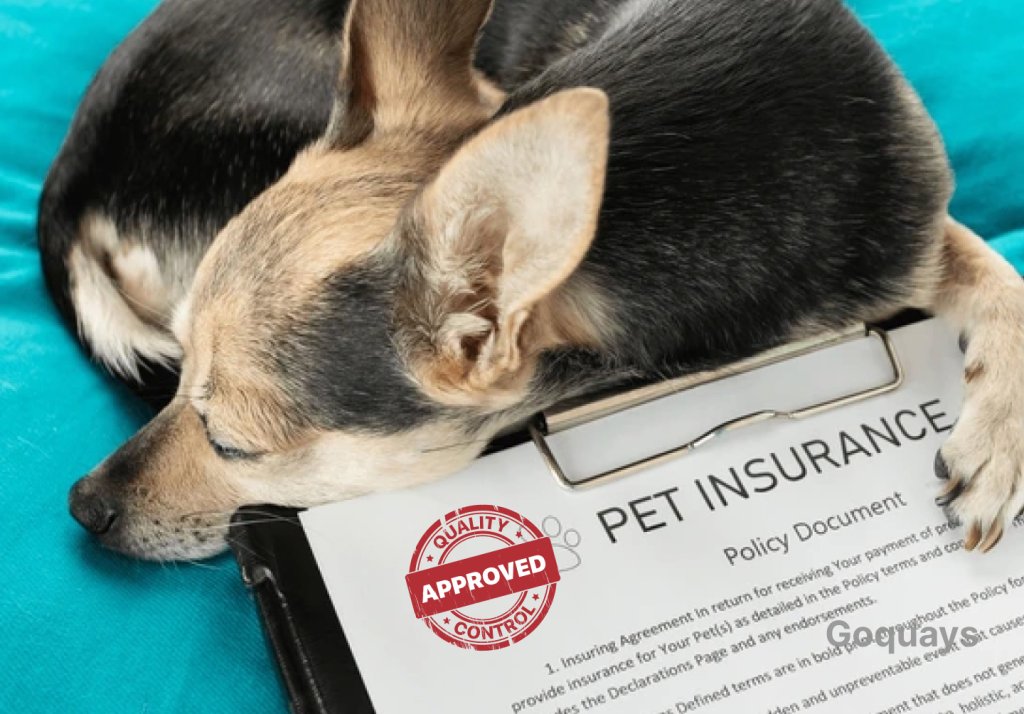Cheap pet insurance doesn’t have to mean poor coverage—if you know how to find the right policy, you can protect your dog without overspending. As a pet owner, you already know that vet bills can add up quickly. Whether it’s routine check-ups, unexpected accidents, or long-term health conditions, having pet insurance can save you from hefty out-of-pocket expenses. But what if you’re on a budget? How do you find affordable pet insurance without cutting corners on your dog’s care?
The truth is, pet insurance doesn’t have to break the bank—but navigating the options can feel overwhelming. With so many providers, different types of coverage, and hidden fees, it’s easy to end up overpaying for a policy that doesn’t truly meet your dog’s needs. At the same time, choosing the cheapest option without reading the fine print could leave you with costly gaps in coverage when you need it most.
The good news is that you can get cheap pet insurance for your dog without sacrificing essential coverage—you just need to know what to look for. By understanding how policies work, where to find discounts, and which factors affect your premium, you can make smart choices that keep costs down while still ensuring your furry friend gets the best protection.
Whether you’re insuring a playful puppy, an adventurous adult, or a senior dog with specific health needs, this guide will walk you through practical ways to find affordable pet insurance without compromising on care. Let’s dive in!
Start with what your dog really needs

Before you start comparing policies, take a moment to think about your dog’s specific needs. Age, breed, and overall health all play a big role in determining the type of coverage that makes sense for you.
- If you have a young and healthy dog, you may not need a pricey policy with extensive coverage just yet. A basic plan that covers accidents and emergencies might be enough.
- If your dog belongs to a breed prone to certain conditions (like hip dysplasia in large breeds or breathing issues in flat-faced dogs), you’ll want a policy that covers hereditary and congenital conditions.
- Senior dogs often require long-term care, so look for policies that cover chronic illnesses rather than opting for the cheapest option that might exclude these conditions.
Compare different insurance providers

Just like with car or home insurance, not all pet insurance policies are created equal. Prices, coverage, and even the claims process can vary widely between providers, so it’s important to take your time and compare different options before committing. A policy that looks cheap upfront might come with high out-of-pocket costs when you actually need to use it.
When comparing policies, pay attention to:
- Monthly Premiums – This is the amount you’ll pay each month to keep your coverage active. Lower premiums might be tempting, but they often come with higher excess fees or limited coverage.
- Coverage Limits – Some policies offer unlimited vet fee coverage, while others have annual or per-condition limits. If your dog develops a chronic illness, a low coverage limit could leave you paying hefty vet bills yourself.
- Exclusions – Many policies don’t cover pre-existing conditions, routine vet visits, dental care, or alternative treatments like physiotherapy or acupuncture. Read the exclusions carefully to avoid surprises.
- Customer Reviews – Even if a policy looks great on paper, poor customer service or slow claim processing can make a huge difference. Look for reviews that mention how easy it is to file claims and how quickly reimbursements are processed.
Excess Fees & Reimbursement Structure – Some insurers charge fixed excess fees, while others require you to cover a percentage of each claim. Also, check if the insurer pays your vet directly or if you’ll have to pay upfront and wait for reimbursement.
Choose a higher excess to lower your premium

If you’re looking for cheap pet insurance for dogs, adjusting your excess can make a big difference in how much you pay each month. The excess (sometimes called a deductible) is the amount you have to pay before your insurance starts covering the rest of the bill. Many insurance providers let you choose how much excess you’re willing to pay, and the higher the excess, the lower your monthly premium.
For example, let’s say you have two policy options—one with a £100 excess and another with a £250 excess. The first option will have higher monthly payments because the insurer is taking on more of the cost. The second option, however, will have lower premiums because you’re agreeing to cover a bigger portion of the bill before the insurance kicks in.
This can be a smart way to save money if your dog is generally healthy and doesn’t need frequent vet visits. However, it’s important to choose an excess you can comfortably afford in case an emergency happens. If you set it too high just to lower your monthly cost, you might struggle to pay it when you actually need to make a claim.
Think about your dog’s breed, age, and any potential health risks before deciding. Some breeds are prone to specific conditions that could require regular treatment, so a high excess might not be the best option if you expect to make multiple claims. On the other hand, if your dog is young and in good health, a higher excess could be a great way to reduce your monthly costs while still having protection for major expenses.
Cheap pet insurance for dogs doesn’t mean sacrificing coverage—it’s about finding the right balance between what you pay now and what you might need to pay later.
Look for multi-pet discounts

If you have more than one furry friend, you might be able to save money by insuring all your pets under the same policy. Many insurance providers offer multi-pet discounts, which can help reduce the overall cost of coverage while still ensuring each pet gets the protection they need.
Even if the discount is only 5–10%, those savings can add up over the years. Plus, having all your pets under one policy can make managing insurance much easier—one provider, one renewal date, and one set of terms to keep track of.
When looking for cheap pet insurance for dogs, check with different insurers to see how they handle multi-pet policies. Some companies apply a flat discount per additional pet, while others offer tiered savings based on how many pets you add. You may even find some insurers that waive certain fees or offer perks like lower excesses for multiple pets.
One thing to keep in mind is that while a multi-pet discount is great, it’s still important to ensure each pet is getting the right level of coverage. Don’t just go with the cheapest option—make sure the policy covers what you need, especially if one of your dogs has specific health concerns.
If you already have pet insurance for one dog, check with your current provider before looking elsewhere. Some insurers will let you add a second (or third) pet at a discounted rate, saving you the hassle of switching providers. And if you’re signing up for pet insurance for the first time, getting all your pets covered under one policy from the start could be a smart move.
Getting cheap pet insurance for dogs doesn’t always mean cutting back on coverage—it’s about finding little ways to save without sacrificing quality care.
Consider an accident-only policy

If your main concern is covering unexpected injuries rather than long-term illnesses, an accident-only policy could be a budget-friendly option. These types of plans typically cost less than comprehensive pet insurance because they only cover accidents, not illnesses.
For example, if your dog gets hit by a car, breaks a bone, or swallows something they shouldn’t have, an accident-only policy will help cover the costs. This can be a great way to get cheap pet insurance for dogs while still having financial protection for emergencies.
However, the downside is that these policies won’t cover illnesses. If your dog develops a condition like diabetes, arthritis, or allergies, you’ll have to pay for all treatments yourself. This means an accident-only plan is best for dogs that are young, healthy, and unlikely to need ongoing medical care.
Before choosing this option, consider your dog’s lifestyle and risks. If they’re an active dog that loves to run and jump, accident coverage might be a smart move. But if they’re a breed prone to hereditary conditions or long-term health problems, a more comprehensive plan could save you more money in the long run.
It’s also worth checking if an accident-only policy includes things like emergency surgeries, hospitalization, and medications. Some plans have strict limits on what they’ll cover, so make sure you understand the details before signing up.
Accident-only policies can be a great way to get cheap pet insurance for dogs, but only if they match your pet’s needs. If you want peace of mind knowing that both accidents and illnesses are covered, it might be worth looking into a broader policy instead.
Pay annually instead of monthly

Many insurance providers offer the option to pay your premiums annually instead of monthly, and if you can afford it, this could save you money. Insurers often charge a small fee for spreading out payments over the year, so paying upfront could knock a few percent off your total cost.
For example, if a policy costs £30 per month, that’s £360 per year. But if the insurer offers a 10% discount for paying annually, you’d only pay £324—saving you £36. It might not seem like much, but those savings add up, especially if you plan to keep the policy for years to come.
If you’re serious about finding cheap pet insurance for dogs, ask insurers if they offer discounts for annual payments. Some companies even provide additional perks, like locking in your rate for the year or offering extra coverage benefits.
Of course, not everyone can afford to pay a full year’s premium at once, so this option isn’t for everyone. But if you have the ability to do it, it’s an easy way to reduce costs without compromising on coverage.
Before committing to an annual payment, make sure you’re happy with the policy and the provider. If you decide later that you want to switch insurers, some companies may not refund the full amount if you cancel early. Always check the terms to see if there are any restrictions on refunds or policy changes.
Cheap pet insurance for dogs isn’t just about finding the lowest premium—it’s about making smart financial decisions that save you money in the long run. Paying annually is one of those little tricks that can keep costs down while ensuring your dog gets the protection they need.
Keep your dog healthy

One of the best ways to get cheap pet insurance for dogs is to prevent health problems before they start. Insurance companies look at your dog’s medical history when determining your premium, and if your pet has frequent health issues or pre-existing conditions, you may end up paying more for coverage—or struggle to find coverage at all.
Keeping your dog healthy doesn’t just help lower your insurance costs; it also ensures they live a longer, happier life. Here are some simple but effective ways to keep your pup in top shape:
- Feed a balanced diet – Good nutrition is the foundation of good health. Choose high-quality dog food that meets your pup’s nutritional needs, and avoid feeding too many treats or human foods that could cause obesity or digestive problems.
- Stay up to date on vaccinations and parasite prevention – Regular vaccinations protect against serious diseases, and flea, tick, and worm treatments prevent issues that could lead to costly vet visits.
- Schedule regular vet check-ups – Even if your dog seems perfectly healthy, routine check-ups can catch potential problems early before they turn into expensive medical conditions.
- Make sure they get enough exercise – Regular walks and playtime help prevent obesity, which is linked to many health problems like diabetes and joint issues.
- Keep their teeth clean – Dental disease is common in dogs and can lead to costly vet bills if left untreated. Regular brushing and dental chews can help keep their teeth and gums healthy.
By keeping your dog in the best possible health, you’ll likely make fewer insurance claims, which can help keep your premiums lower over time. Some insurers even offer wellness plans or discounts for dogs with a clean bill of health, so it’s always worth checking for any available benefits.
Check for employer or membership discounts

If you’re looking for cheap pet insurance for dogs, you might already have access to discounts without even realizing it. Some workplaces, banks, and pet-related organizations offer discounted pet insurance as a perk for their employees or members.
If you work for a large company, it’s worth asking your HR department if they offer any group discounts on pet insurance. Some employers have partnerships with insurance providers, giving their employees access to lower rates. Even if pet insurance isn’t listed as a formal benefit, they may offer discounts through a third-party provider or a wellness program.
Similarly, if you’re a member of a pet-related organization—such as a kennel club, rescue group, or breed-specific association—you may be eligible for discounted rates. Some credit unions and banks also offer pet insurance as part of their financial services.
Even if the discount is small, every little bit helps when you’re trying to keep costs down. And if you’re shopping for a new insurance policy, it’s always worth asking providers if they offer special discounts for certain memberships or workplaces.
Finding cheap pet insurance for dogs isn’t just about picking the lowest-cost plan; it’s also about taking advantage of every possible way to reduce your costs without sacrificing coverage. A simple membership discount could make a big difference over time.
Avoid making small claims

Some pet insurance providers reward policyholders who don’t make frequent claims by offering a no-claims discount. This means that the longer you go without submitting a claim, the lower your premiums may be when it comes time to renew your policy.
If your dog has a minor health issue, like a small ear infection or an upset stomach, consider whether you really need to file a claim or if you can afford to cover the cost out of pocket. Of course, you should always use your insurance for serious or expensive treatments, but avoiding unnecessary claims can keep your premiums lower in the long run.
It’s a bit like car insurance—if you make a claim for every little scratch or dent, your premiums will likely go up. But if you only file claims for major incidents, your provider might reward you with a lower renewal rate.
Some insurers even offer lower deductibles or bonus coverage for customers who go a certain number of years without making a claim. Others provide cashback or discounts on future policies. When comparing different options for cheap pet insurance for dogs, check if any providers offer this type of reward.
If your dog is prone to frequent minor health issues, a wellness plan or routine care package might be a better option. These plans often cover things like vaccinations, flea treatments, and dental cleanings without affecting your main insurance policy. This way, you can keep your premiums low while still covering routine expenses.
Sign up early to avoid higher costs

If you’re thinking about getting pet insurance, the best time to do it is when your dog is young and healthy. The older your dog gets, the more expensive their insurance will be, and some providers won’t cover pre-existing conditions that develop before you sign up.
Most insurance companies charge higher premiums for older dogs because they are more likely to develop health problems. Some providers even refuse to cover dogs past a certain age or will only offer limited coverage. By enrolling your dog in a policy while they are still young, you can lock in a lower premium and avoid exclusions for future medical conditions.
Even if your dog seems perfectly healthy now, unexpected illnesses and accidents can happen at any time. If you wait until your dog gets sick to sign up for insurance, you might find that their condition isn’t covered, leaving you to pay out of pocket for treatments.
Signing up early also gives you more options when choosing a policy. Some providers offer lifetime coverage plans, meaning that as long as you keep renewing your policy, your dog will be covered for their entire life. These plans tend to be more affordable when started at a young age, compared to signing up later when premiums are already high.
Can I lower my pet insurance premium without losing coverage?
Yes! There are several ways to reduce your premium while keeping solid coverage. Choosing a higher excess (deductible), paying annually instead of monthly, and maintaining a healthy dog can all help lower costs. Some insurers also offer discounts for multiple pets, no-claims bonuses, or employer membership benefits.
Can I switch pet insurance providers if I find a cheaper deal?
Yes, but be cautious. Switching policies might mean losing coverage for any pre-existing conditions your dog has developed. Before canceling your current policy, make sure your new one offers the same (or better) coverage and check for any waiting periods.
What should I ask my vet about pet insurance?
Your vet can give you insights into your dog’s breed-specific health risks, common illnesses, and potential medical costs. Ask if they have experience with certain insurance providers and if they recommend coverage for things like hereditary conditions or routine care.
Is there an age limit for buying pet insurance?
Most insurers allow you to enroll puppies as young as 8 weeks old, but older dogs may have more restrictions. Some companies stop offering new policies for dogs over a certain age (usually between 8–14 years old). If your dog is already insured, you can typically keep renewing their coverage for life.
Is it worth getting pet insurance for an older dog?
It depends on your budget and your dog’s health. Older dogs are more prone to illnesses, so vet bills can add up quickly. However, insurance for senior dogs is often more expensive and may come with more exclusions. If your dog is already insured from a young age, it’s usually best to keep the policy rather than switch. If you’re considering a new policy, compare providers carefully to find one that covers senior pets at a reasonable cost.
Does cheap pet insurance cover routine care?
Not always. Many basic plans focus on accidents and illnesses rather than routine check-ups, vaccinations, or dental care. Some insurers offer optional wellness add-ons, but these may increase your premium.
What are the downsides of buying cheap pet insurance?
Cheaper policies often come with lower coverage limits, higher excess fees, or more exclusions. This means you could end up paying more out of pocket if your dog gets sick or injured. Always read the fine print before choosing a plan.
At what age is pet insurance the cheapest?
Pet insurance is cheapest when you enroll your dog at a young age—usually as a puppy. The younger and healthier your dog is, the lower your premiums will be. Waiting too long could mean higher costs or exclusions for pre-existing conditions.
Compare pet insurance quotes
The best way to find cheap pet insurance for dogs is to compare multiple providers. Look at premiums, coverage limits, exclusions, and customer reviews to make sure you’re getting the best value for your money.
Final thoughts
Finding cheap pet insurance for your dog doesn’t mean settling for poor coverage. By choosing the right policy, comparing providers, and making smart decisions about coverage, you can get affordable insurance that still protects your dog when they need it most.
Take the time to compare your options, consider what coverage is truly necessary, and look for ways to lower your premiums without putting your pet at risk. With a little research, you can find a budget-friendly plan that gives you peace of mind and keeps your furry friend covered!
If you’re serious about finding cheap pet insurance for dogs, don’t wait until it’s too late. The sooner you enroll, the better the coverage and price you’ll get. It’s a small investment now that could save you thousands in vet bills down the road.




